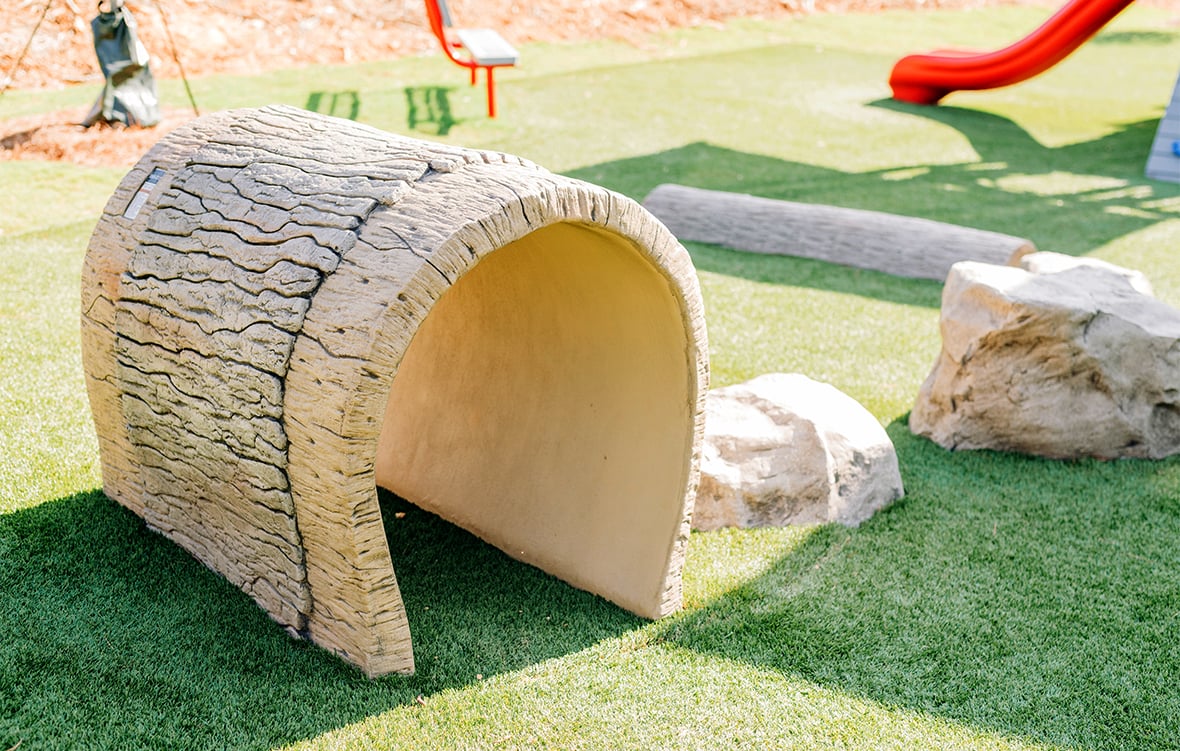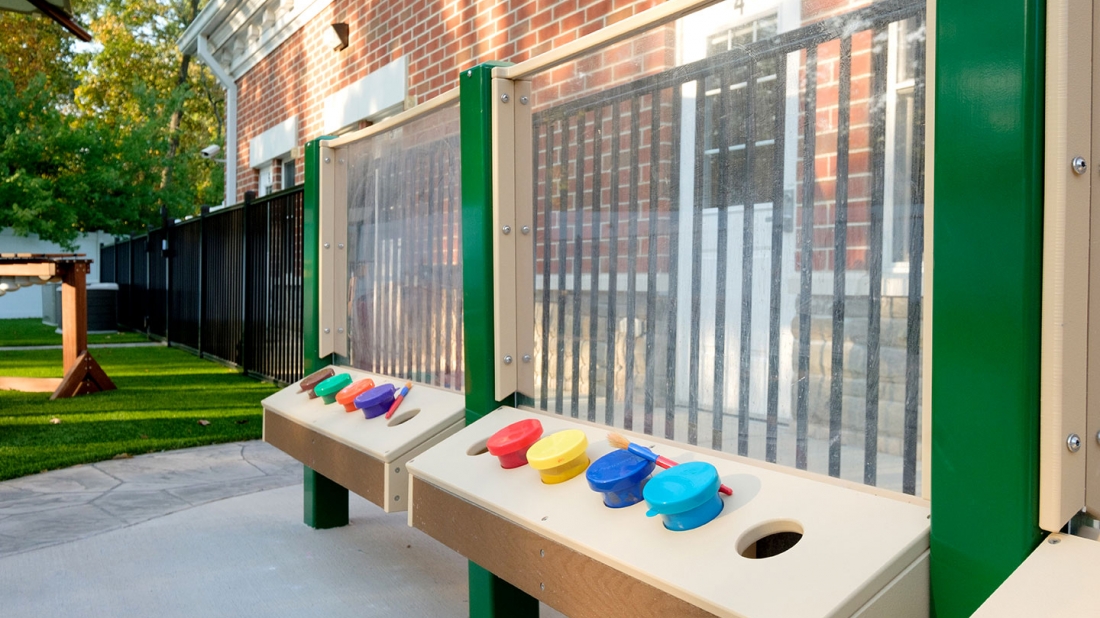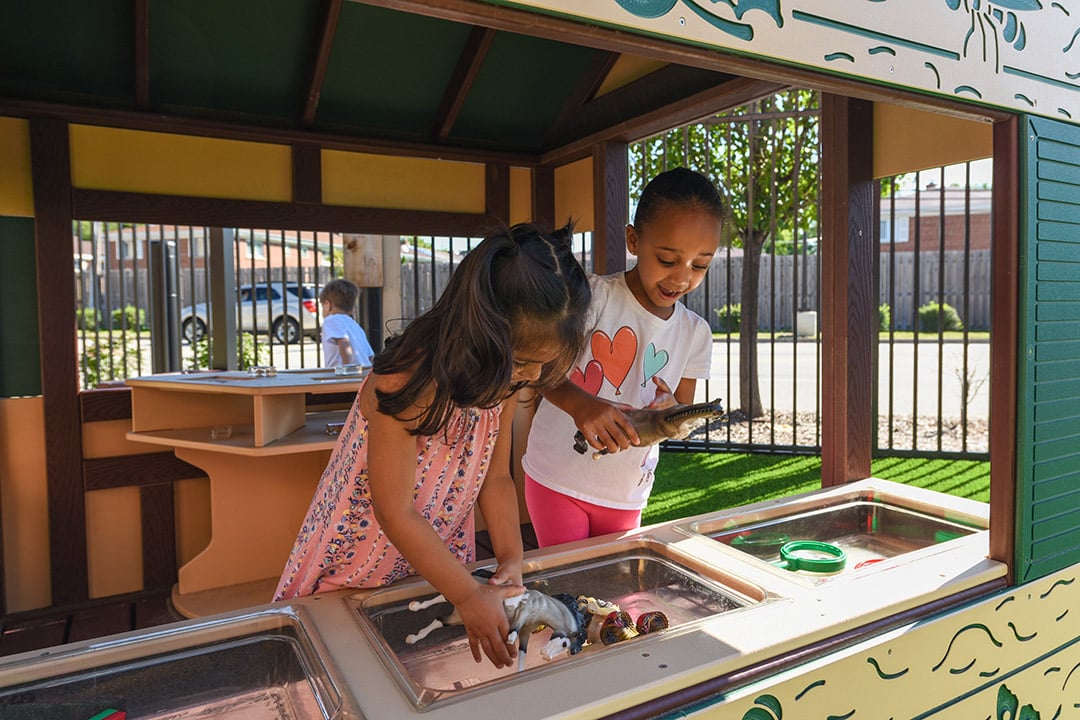Children love spending time playing outside and a study conducted by the University of Tennessee at Knoxville confirms that spending time outside is good for children’s health. With more studies confirming the positive benefits that children receive when they engage with nature, it’s no wonder that natural playgrounds are becoming popular at parks, schools, daycares, museums, and more. Let’s discuss a few of these questions by beginning with, “What is a natural playground?”
Elements and Textures from Nature
A natural playground is a play environment that consists of elements and textures from the earth such as tree logs, tree stumps, boulders, plants, and drainage paths, among others instead of a traditional steel playground structure that includes slides and climbers. In short, if you have ever climbed a rock, played in the leaves, or planted plants, you have experienced natural play. These natural landscapes provide opportunities for children to play, explore, imagine, and be challenged by the natural elements. Natural playgrounds enable children to move freely around the environment allowing them to explore, run, jump, climb, crawl, feel, smell, and more. Studies show children spend even more time playing outdoors in natural play environments than in traditional playground environments.
Benefits of Natural Playgrounds
Playgrounds made from natural elements have significant benefits for children. In addition to promoting outdoor activity, playgrounds improve health, socialization, and motor skills while fostering inclusivity. Children can be challenged through physical play elements such as boulders and tree stumps that increase strength and balance. Items such as plants, rocks, and animal feeders in an open, natural play space encourage children to collaborate improving social skills, problem-solving, empathy, and more as they work together. Since most natural playgrounds are open, it provides for inclusion for children of all skill levels and abilities to be involved.
Types of Natural Play Equipment
Outdoor playground environments come in different shapes, sizes, and costs. The most noticeable difference is that there is no large playground equipment on the site, but instead, it includes items such as tree slices or a log tunnel. Tree slices can be used to play games of hopscotch. Add a sensory activity with a planter full of plants for children to water, touch, and smell. Many daycare centers incorporate wood playhouses and stages for their students to playhouse and put on quickly organized plays for their classmates. Natural wood benches are a good amenity for children to have moments of rest with their friends as they socialize about their adventures on the playground. Open spaces of grass or natural play surfacing will encourage young children to run, jump, and play games such as tag with each other. The possibilities are virtually endless when you decide to add a natural playground to your park, school, or daycare center.
Some key components of a natural playground include:
- The use of natural materials and textures found on trees, rocks, sand, and other landscaping
- Plenty of open space for children to roam and explore freely
- Unstructured play with no fixed objective
- Walkways or bridges for children to get from one point to another, even if it’s over an artificial creek
- Planters or a garden for children to develop social skills and teamwork as they tend to living plants and flowers
- The ability to move light-weight objects from one location to another within the area
- Elimination of time limits
- Naturally shaded areas




.jpg)

